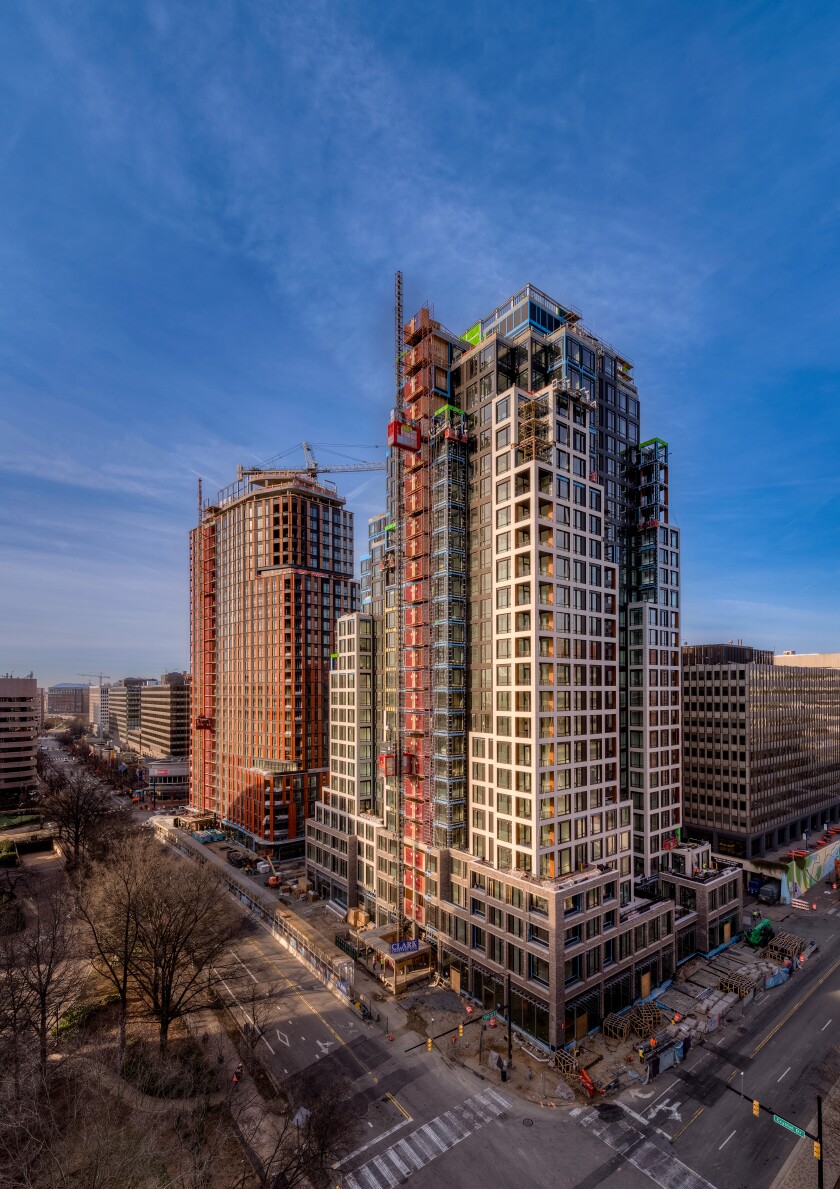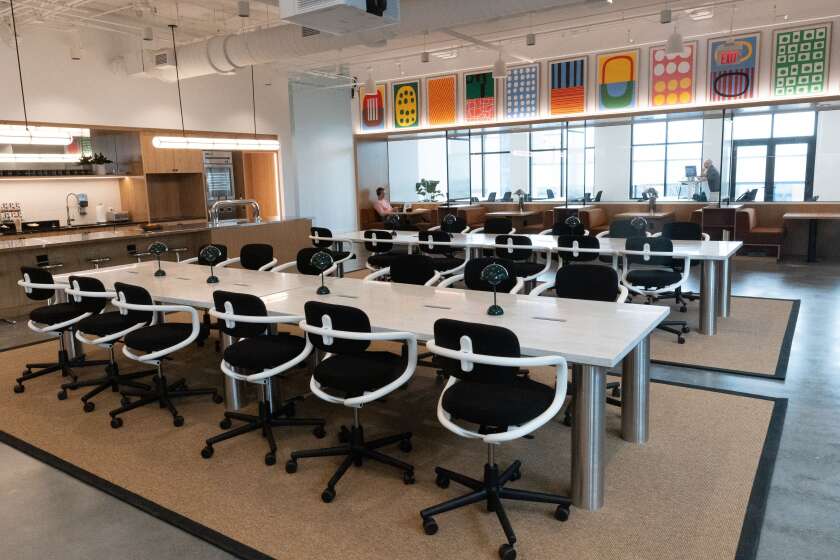In Brief:
Nearly 1 in 5 commercial offices were empty at the end of last year. It was the highest rate of office vacancy in more than 40 years, according to Moody’s Analytics — the culmination of a trend that was supercharged by the COVID-19 pandemic and a broad shift to remote work in many fields. The growing vacancy problem has been especially worrisome in urban downtowns, where whole economies have been built around the presence of daily commuters.
But it’s also a concern in suburban areas, where office space tends to be more cloistered than it is in cities but can still generate a substantial portion of tax revenues.
In Arlington County, Va., outside Washington, D.C., office vacancy reached 21.5 percent last year, exceeding the national average. Recent reports suggest it’s climbed even higher. “Where we find ourselves today is with one of the highest vacancy rates in our region,” says Ryan Touhill, director of Arlington Economic Development, a county department.
Arlington, the home of Amazon's HQ2, is much more developed than a typical suburb. Its long avenues are crammed with freestanding office buildings and restaurants rather than corporate parks surrounded by parking lots. Still, it's not alone in being forced to rethink how its office districts work. Suburbs all over the country are working to redevelop office parks in hopes of heading off abandonment and decay.
As building owners work to attract new tenants, the county has spent the last year reviewing its own policies to examine whether it might be getting in the way of business activity, Touhill says. Its goal is to build more resiliency into its office districts, with a greater mix of building uses and the ability to add new amenities for traditional office tenants.
9 Million Empty Square Feet
Arlington currently has around 9 million square feet of vacant office space. Some of it is owned by JBG Smith, a real estate investment trust based in Bethesda, Md. Many of the properties in the group’s portfolio were built between the 1960s and 1990s, says Matt Ginivan, senior vice president of real estate at JBG Smith.
The company has been able to make improvements to some to keep them “relevant,” he says, going as far as taking some buildings down to their concrete structures and rebuilding them. But other buildings, especially those with deep floor plates and low ceilings, are functionally obsolete, he says. JBG Smith has recently proposed demolishing one of its buildings and rebuilding it altogether.
The county has an interest in helping property owners reoccupy their office space. Commercial real estate generates 16 percent of the county’s tax revenues, Touhill says. Since launching its Commercial Market Resiliency Initiative in 2022, Arlington officials have focused on addressing public policies that could hamper development.
Zoning regulations for office districts currently don’t allow certain types of retail or higher education, for example. Some permitting processes slow things down, requiring developers to lock in certain uses or even specific types of tenants early in the process.
Touhill says there are people in lots of county departments reviewing policies as part of the initiative. He plans to present a range of recommendations to the county board this year. “What we want to do is make sure that we’re not standing in the way of a market solution,” Touhill says.
Ginivan says property owners are looking for flexibility and support from the public sector as they navigate challenges with office vacancy. Arlington hasn’t “cracked the code yet,” he says, but adds that its officials have been uniquely proactive about looking for solutions. “Whether other jurisdictions want to embrace this type of initiative or not, it’s going to come to them,” Ginivan says. “The challenge is not unique to Arlington.”
Broader Trends in Suburbs
Jobs have been growing in the suburbs for years. But there are challenges to suburban growth, including the rapid increase in housing prices in many major metro areas. The office parks that traditionally housed many suburban corporate jobs are increasingly out of favor with younger workers.

Sam Kittner
A lot of suburban office space is isolated from other uses, islands in a sea of surface parking. Even before the pandemic, many suburbs recognized the need to revitalize those spaces, and build connections between office space, housing, public outdoor space and other commercial uses. Over the last decade and a half, suburban office parks have begun to recognize “urbanism as the new amenity,” Dunham-Jones says.
That trend accelerated during the pandemic. As demand for office space drops, the best properties have an extra advantage — especially those that are walkable; accessible by transit; close to housing, restaurants and retail. Those types of density are urban characteristics that still face a lot of opposition in suburban areas.
“What community planners need to be working on is convincing [older] people that what they perceived as the amenities driving their decisions about where to live and their job are so different from today’s generation,” Dunham-Jones says. “People don’t have the same job tenure. If you’re not building a habitat for the next generation of workers, your jobs are going away, your tax base is going down, and you are committing a certain degree of suicide.”
Creating Unique Spaces
While office vacancy has risen everywhere, some communities are well-positioned to attract tenants leaving other ones. Downtown St. Louis is struggling mightily in the wake of the pandemic, with office vacancy rates around 22 percent. Suburban areas like nearby Clayton are attracting new tenants with a mix of office, housing and retail spaces in a part of the metro area that’s perceived as safe.
“It’s 100 percent the environment. They’re all paying a premium to come here,” says James Mosby, a Clayton-based vice chair at Cushman & Wakefield, a real estate services firm.
“[Clayton] is the most expensive market we’ve got, but people are still doing it because they realize if we’re not in a market that has that type of amenities, the workers aren’t going to come back," Mosby says. "That’s why we’re seeing a shift towards highly amenitized space being offered in the market.”
In Dublin, Ohio, a suburb of Columbus, city officials are working to revitalize Metro Center, a corporate office park that dates back to the late 1970s and early ‘80s. Dublin is already attractive for office tenants compared to some other parts of Central Ohio, says Jeremiah Gracia, the city’s director of economic development, but “we still know we have a lot of product that needs just some TLC in terms of the quality of the space.”
The city is undergoing a public process to reimagine the corporate park, with potential improvements to public infrastructure and changes to zoning codes. Some improvements could be paid for with public funding such as tax increment financing.
The Metro Center revitalization project is part of a broader economic development strategy of creating distinct commercial nodes throughout Dublin. The city has invested in other mixed-use commercial areas, including Bridge Park, a district with apartments, hotels, restaurants and shopping. But it can’t just repeat the same strategy in every aging office park, Gracia says. Commercial tenants and workers want amenities, but they also want to be in areas with a distinct sense of place.
“We want them to say, ‘We’re going to Metro district,’” Gracia says. “It has this different feel and different amenity. It’s unique enough to say it’s not Bridge Park West. That is our North Star. That’s how we’re positioning this for its next iteration.”
Related Articles













